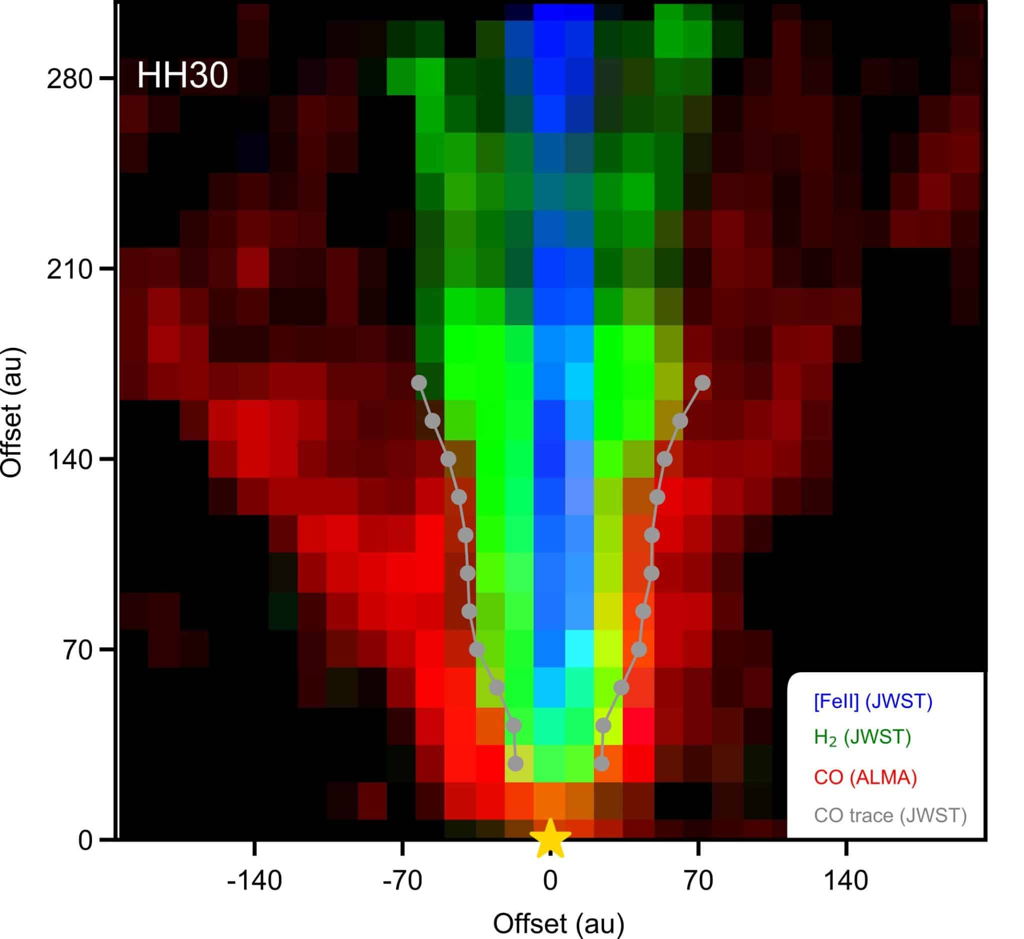Disk winds have unveiled the secrets behind planet formation.
Every second, more than 3,000 stars are born in the observable universe. Many of them are surrounded by protoplanetary disks—rotating gas and dust clouds from which planets eventually form. However, the processes through which stars and planetary systems are created are not yet well understood.
It is known that accretion—the accumulation of matter by a star from the surrounding disk—plays a crucial role in these processes. For the gas to stop rotating around the star and fall onto it, it must lose some angular momentum, but the exact mechanisms of this process remain unclear.
In recent years, researchers have been considering disk winds as a possible explanation. It is believed that winds driven by magnetic fields and traveling at speeds of 16-80 kilometers per second carry away some gas and angular momentum from the disk's surface.
The authors of a study, published in the journal Nature Astronomy, observed four young stars positioned "edge-on" to Earth. Three of the four stars have shed their initial gas and dust clouds, making them ideal candidates for studying processes within the disk.
Using the infrared spectrograph NIRSpec (one of the main instruments of the "Webb" telescope) and previously obtained data from the ALMA (Atacama Large Millimeter Array), astronomers gained fundamentally new insights into the gas flows being expelled from the planet-forming disk into space.
It turned out that the winds have a complex three-dimensional structure: within each disk, a fast and narrow jet flow was identified based on the emission of iron ions (Fe II), which is embedded in a slower flow of molecular hydrogen (H₂), which, in turn, is embedded in an even slower flow of carbon monoxide (CO). These various components confirm theoretical models of the "embedded" morphology of disk winds.

Thus, the team obtained the first images of winds that contribute to the loss of angular momentum (when gas sheds some of its inertia to fall onto the star). The results from this study also help to understand how stars and planetary systems form.
Other processes that influence the evolution of protoplanetary disks include so-called X-winds—streams of material originating from the protostar and arising due to magnetic forces in the accretion disks close to the forming star. The outer parts of the disk are also illuminated by intense starlight, leading to the formation of thermal winds.
“The ability to distinguish between winds driven by magnetic fields, thermal winds, and X-winds was made possible by the high sensitivity and resolution of the 'James Webb' space observatory,” the authors of the new study explained.
The findings provide scientists with insights into what the Solar System might have looked like 4.6 billion years ago. The "embedded" morphology of the winds supports theoretical predictions that disk winds play a key role in the accretion of matter and the formation of planets.
The team plans to continue observations to better understand the processes occurring in protoplanetary disks and to gather new data on the origins of star systems, such as the Solar System and potentially habitable worlds beyond it.